Meeting Community Needs
Practical Guides for Librarians
 About the Series
About the Series
This innovative series written and edited for librarians by librarians provides authoritative, practical information and guidance on a wide spectrum of library processes and operations.
Books in the series are focused, describing practical and innovative solutions to a problem facing todays librarian and delivering step-by-step guidance for planning, creating, implementing, managing, and evaluating a wide range of services and programs.
The books are aimed at beginning and intermediate librarians needing basic instruction/guidance in a specific subject and at experienced librarians who need to gain knowledge in a new area or guidance in implementing a new program/service.
 About the Series Editor
About the Series Editor
The Practical Guides for Librarians series was conceived by and is edited by M. Sandra Wood, MLS, MBA, AHIP, FMLA, librarian emerita, Penn State University Libraries.
M. Sandra Wood was a librarian at the George T. Harrell Library, the Milton S. Hershey Medical Center, College of Medicine, Pennsylvania State University, Hershey, PA, for more than thirty-five years, specializing in reference, educational, and database services. Ms. Wood worked for several years as a development editor for Neal-Schuman Publishers.
Ms. Wood received an MLS from Indiana University and an MBA from the University of Maryland. She is a fellow of the Medical Library Association and served as a member of MLAs Board of Directors from 1991 to 1995. Ms. Wood is founding and current editor of Medical Reference Services Quarterly , now in its thirty-fifth volume. She also was founding editor of the Journal of Consumer Health on the Internet and the Journal of Electronic Resources in Medical Libraries and served as editor/coeditor of both journals through 2011.
Titles in the Series
1. How to Teach: A Practical Guide for Librarians by Beverley E. Crane.
2. Implementing an Inclusive Staffing Model for Todays Reference Services by Julia K. Nims, Paula Storm, and Robert Stevens.
3. Managing Digital Audiovisual Resources: A Practical Guide for Librarians by Matthew C. Mariner.
4. Outsourcing Technology: A Practical Guide for Librarians by Robin Hastings.
5. Making the Library Accessible for All: A Practical Guide for Librarians by Jane Vincent.
6. Discovering and Using Historical Geographic Resources on the Web: A Practical Guide for Librarians by Eva H. Dodsworth and L. W. Lalibert
7. Digitization and Digital Archiving: A Practical Guide for Librarians by Elizabeth R. Leggett
8. Makerspaces: A Practical Guide for Librarians by John J. Burke
9. Implementing Web-Scale Discovery Services: A Practical Guide for Librarians by JoLinda Thompson
10 Using iPhones, iPads, and iPods: A Practical Guide for Librarians by Matthew Connolly and Tony Cosgrave
11. Usability Testing: A Practical Guide for Librarians by Rebecca Blakiston
12. Mobile Devices: A Practical Guide for Librarians by Ben Rawlins
13. Going Beyond Loaning Books to Loaning Technologies: A Practical Guide for Librarians by Janelle Sander, Lori S. Mestre, and Eric Kurt
14. Childrens Services Today: A Practical Guide for Librarians by Jeanette Larson
15. Genealogy: A Practical Guide for Librarians by Katherine Pennavaria
16. Collection Evaluation in Academic Libraries: A Practical Guide for Librarians by Karen C. Kohn
17. Creating Online Tutorials: A Practical Guide for Librarians by Hannah Gascho Rempel and Maribeth Slebodnik
18. Using Google Earth in Libraries: A Practical Guide for Librarians by Eva Dodsworth and Andrew Nicholson
19. Integrating the Web into Everyday Library Services: A Practical Guide for Librarians by Elizabeth R. Leggett
20. Infographics: A Practical Guide for Librarians by Beverley E. Crane
21. Meeting Community Needs: A Practical Guide for Librarians by Pamela H. MacKellar
Meeting Community Needs
A Practical Guide for Librarians
Pamela H. MacKellar
Practical Guides for Librarians, No. 21
ROWMAN & LITTLEFIELD
Lanham Boulder New York London
Published by Rowman & Littlefield
A wholly owned subsidiary of The Rowman & Littlefield Publishing Group, Inc.
4501 Forbes Boulevard, Suite 200, Lanham, Maryland 20706
www.rowman.com
Unit A, Whitacre Mews, 26-34 Stannary Street, London SE11 4AB
Copyright 2016 by Rowman & Littlefield
All rights reserved . No part of this book may be reproduced in any form or by any electronic or mechanical means, including information storage and retrieval systems, without written permission from the publisher, except by a reviewer who may quote passages in a review.
British Library Cataloguing in Publication Information Available
Library of Congress Cataloging-in-Publication Data
Name: MacKellar, Pamela H., author.
Title: Meeting community needs : a practical guide for librarians / Pamela H. MacKellar.
Description: Lanham : Rowman & Littlefield, [2016] | Series: Practical guides for librarians ; no. 21 | Includes bibliographical references and index.
Identifiers: LCCN 2015031375| ISBN 9780810893276 (hardcover : alk. paper) | ISBN 9780810891340 (pbk. : alk. paper) | ISBN 9780810891357 (ebook)
Subjects: LCSH: Libraries and community. | LibrariesAims and objectives. | Library planning. | Public services (Libraries)Evaluation.
Classification: LCC Z716.4 .M32 2015 | DDC 021.2dc23 LC record available at http://lccn.loc.gov/2015031375
 The paper used in this publication meets the minimum requirements of American National Standard for Information SciencesPermanence of Paper for Printed Library Materials, ANSI/NISO Z39.48-1992.
The paper used in this publication meets the minimum requirements of American National Standard for Information SciencesPermanence of Paper for Printed Library Materials, ANSI/NISO Z39.48-1992.
Printed in the United States of America
This book is dedicated to librarians who want to make a difference for all of the people they servein their communities, schools, colleges and universities, corporations, prisons, hospitals, law offices, or wherever their libraries may be.
Preface
Todays libraries are customer-centered portals of knowledge and learning for entire communities, and a librarians work is to make a difference in peoples lives by meeting community needs. Because library programs and services are no longer confined to physical library buildings, the potential for meeting the needs of more people has been unleashed. Librarianship involves interacting with entire communities and constantly engaging in meaningful ways with the people in them. Meeting various changing needs in myriad ways keeps a librarians job interesting, challenging, and even exciting. The rewards are visible and measurable. Communities are reaping huge benefits. Librarians are being recognized and included as valuable and respected partners, collaborators, and astute problem solvers in our towns, schools, universities, and corporations. It is about time!
Long ago, libraries were essentially book warehouses. Librarians were in charge of organizing and managing inventories and monitoring the people who entered the library to use the inventory. Some supplemented traditional library services by providing educational programs to promote knowledge and learning. They were uber-focused on what was going on inside the library, and they took their jobs seriously. To demonstrate their worth, they generated endless statistics about how many books they cataloged and circulated, the number of people entering the building, the number of reference questions asked, or how many people attended programs. Librarians could use this method for measuring effectiveness as long as their jobs revolved around organizing and managing inventories and monitoring people inside the library; however, at some point libraries evolved into community knowledge centers accessible from anywhere. Then the focus of their work shifted from minding the inner workings of the library to meeting the needs of people in the community at large.
Next page
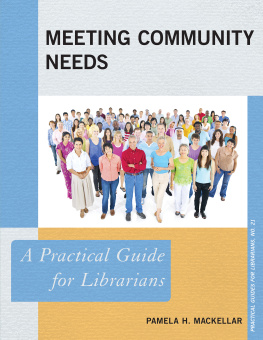
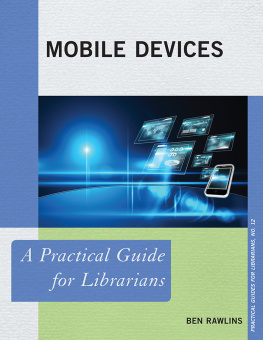

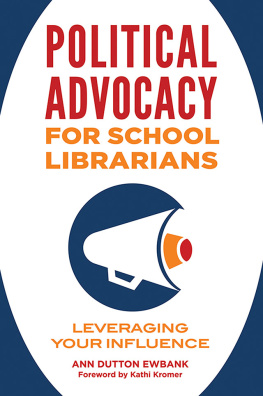
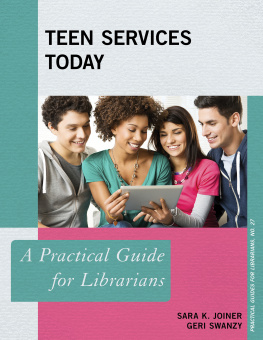



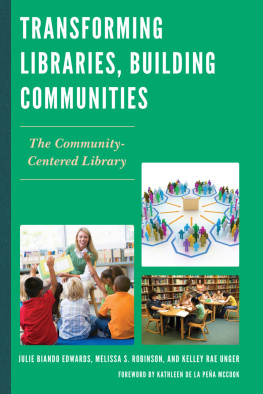
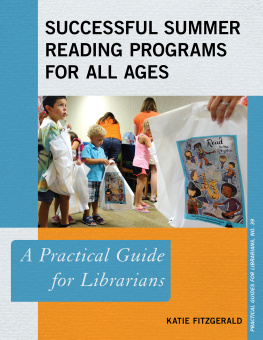
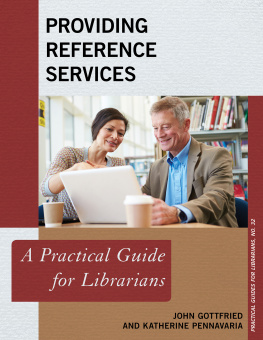
 About the Series
About the Series The paper used in this publication meets the minimum requirements of American National Standard for Information SciencesPermanence of Paper for Printed Library Materials, ANSI/NISO Z39.48-1992.
The paper used in this publication meets the minimum requirements of American National Standard for Information SciencesPermanence of Paper for Printed Library Materials, ANSI/NISO Z39.48-1992.